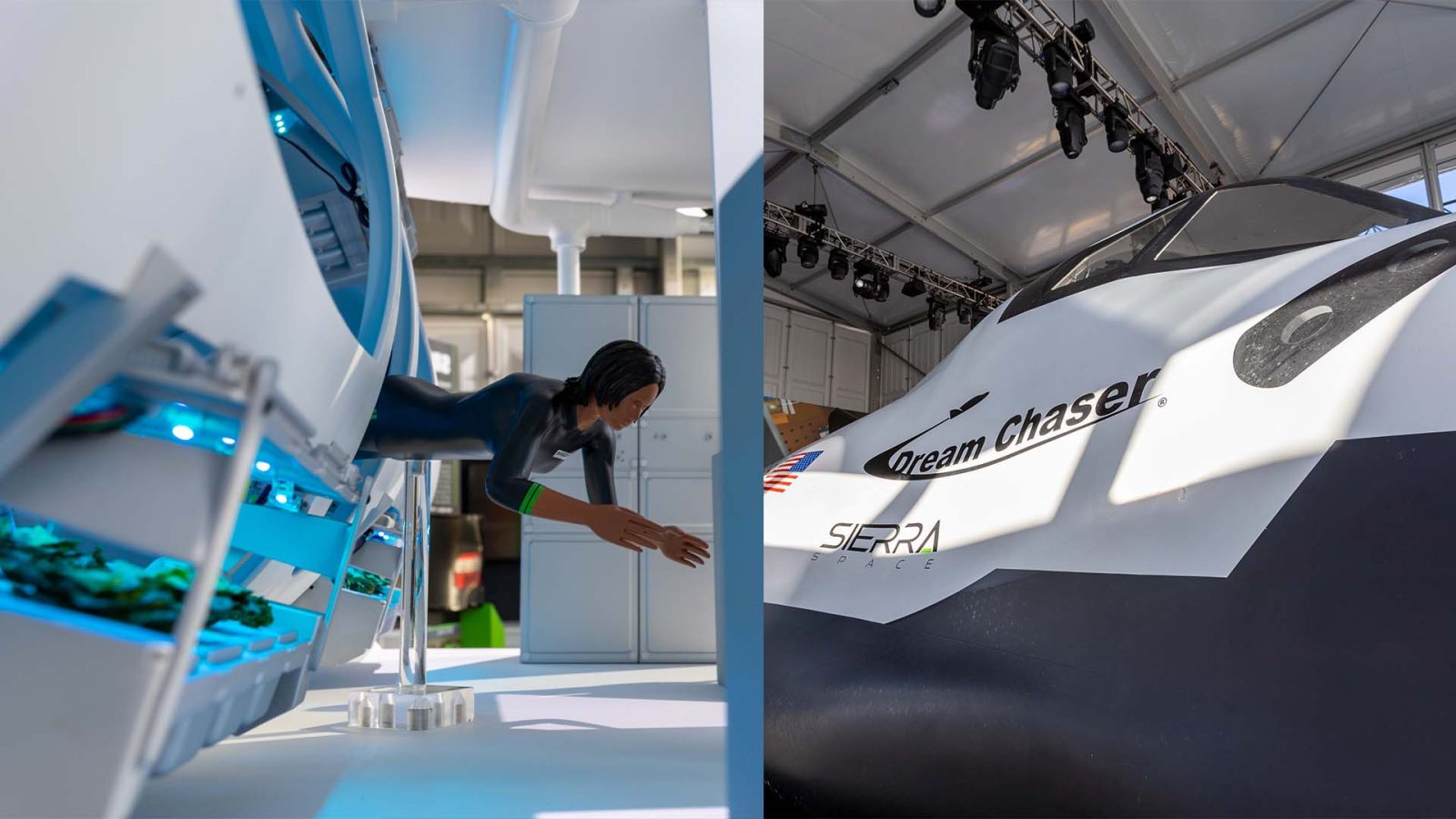
Back at CES 2022, we had a chance to speak with Ken Shields, Sierra Space‘s Director of Commercial Market Development, about the company’s plans for its Dream Chaser space plane and LIFE Habitat.
Table of contents
Interview w/ Ken Shields on Dream Chaser, Orbital Reef, & more [Video]
Dream Chaser coming no earlier than 2023
Going into 2022, we hoped we would see the exciting Dream Chaser launch for its first mission. But, unfortunately, we are forced to wait another year for the launch of the new space plane. Shields said right off in the interview that launch is now expected no earlier than January of 2023.
This isn’t surprising as delays to its launch vehicle, United Launch Alliance’s Vulcan, will probably push its first launch either to very late this year or into next year.
DreamChaser variations and future fleet size
Since the Space Shuttle, Sierra Space’s Dream Chaser will be the first vehicle to launch vertically and land on a runway like a plane. Its cargo variant will be one of two spacecraft capable of returning cargo and research to the ground as other uncrewed spacecraft burn up during reentry.
Dream Chaser will come in multiple variations, DC100, DC200, and DC300. Those numbers correlate to the cargo, crewed, and lessor known defense version of the spaceplane respectively. Shields couldn’t give a lot of details on the DC300, but he was able to talk about future iterations of DreamChaser as the industry grows.

We think that there will be iterations of the Dream Chaser beyond that. Our vision here is to have a fleet of Dream Chaser space planes serving all types of missions and requirements, both commercial, private sector, industry, and government related type stuff.
We also envision Dream Chaser potentially as a vital sort of logistics module. Provide some real important infrastructure for things like satellite servicing, satellite refueling, maybe even satellite capture and control deorbiting.
Ken Shields, Director of Commercial Market Development, Sierra Space
Of course, all of these variations and further Dream Chaser development rely on the cargo version’s success for NASA’s Commerical Resupply Services program and future customers in the private sector.
Potential customers outside of NASA
Furthermore, Shields discussed fleet size with us. Sierra Space isn’t building Dream Chasers just for NASA but expects a much larger customer pool, including from foreign governments and the commercial.
Well, you mentioned NASA, there are other governments around the globe that we fully anticipate will be customers that will buy seats in space on the Dream Chaser. But beyond that, we think it’s a great opportunity for researchers, scientists, and technologies that maybe represent industry consortium from around the countries.
We can see where large industry might want to have researchers and technologies in space on a platform in microgravity, where they have the ability to make some observations in space and make real-time iterations on their experiments and run them. But what we’ve lacked up to now in our spaceflight experience is the real experts in a specific field to be able to make those observations real-time and work on their bench top in space like they might work on their bench top on the ground.
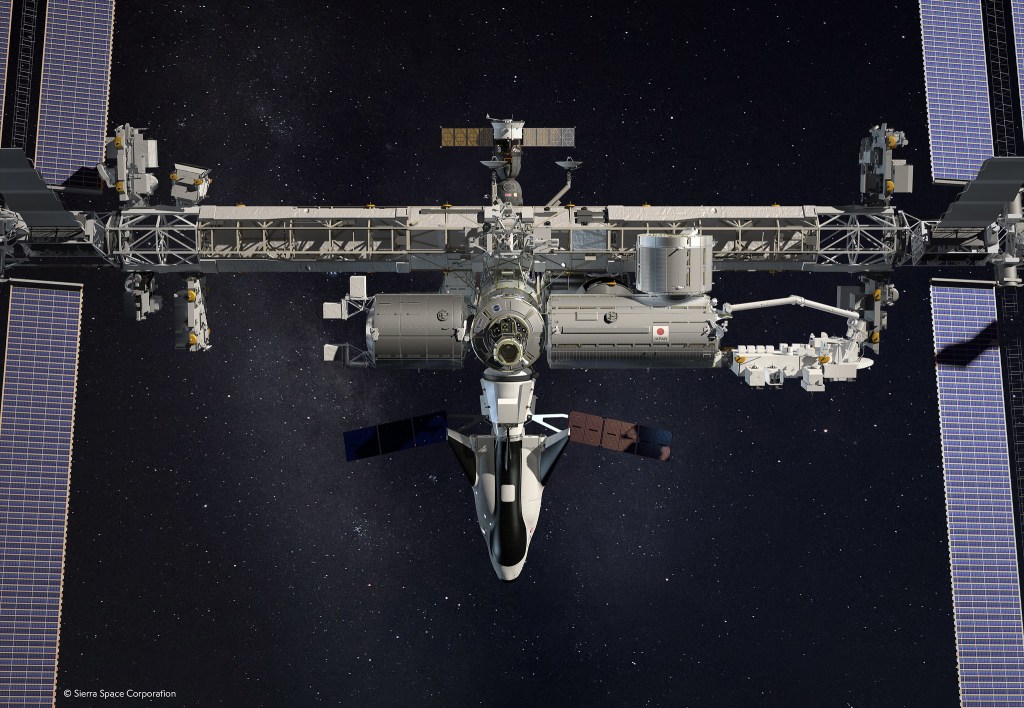
Sierra Space isn’t just sticking to working with governments and companies but is fully expecting tourism to play a part in the company’s development.
Certainly we’re going to dive very heavily into servicing the tourism market and coming up with a whole new menu of spaceflight experiences for tourists to be a part of.
Needed infastructure for Dream Chaser program
To succeed in Sierra Space’s goals for its Dream Chaser program, the company will require some serious infrastructure. Not just processing facilities but places to land. Dream Chaser needs a runway to land softly. Luckily there are plenty of those around the world it can use.
Right now we’re launching from Kennedy Space Center, right there at Kennedy at Cape Canaveral, Florida. That’s also our primary return landing facility there and we will have Sierra Space facilities there for recovery and reprocessing, getting ready for its next mission.
We also have agreements in place with Huntsville, Alabama, for example. We’ve got an agreement there with the Chamber of Commerce and some other companies there to have a landing facility and operation there potentially.
We’re in talks with other countries for the same sort of applications. So we’re actively pursuing other strategic partnerships where we can in fact return the Dream Chaser for missions outside of the US.
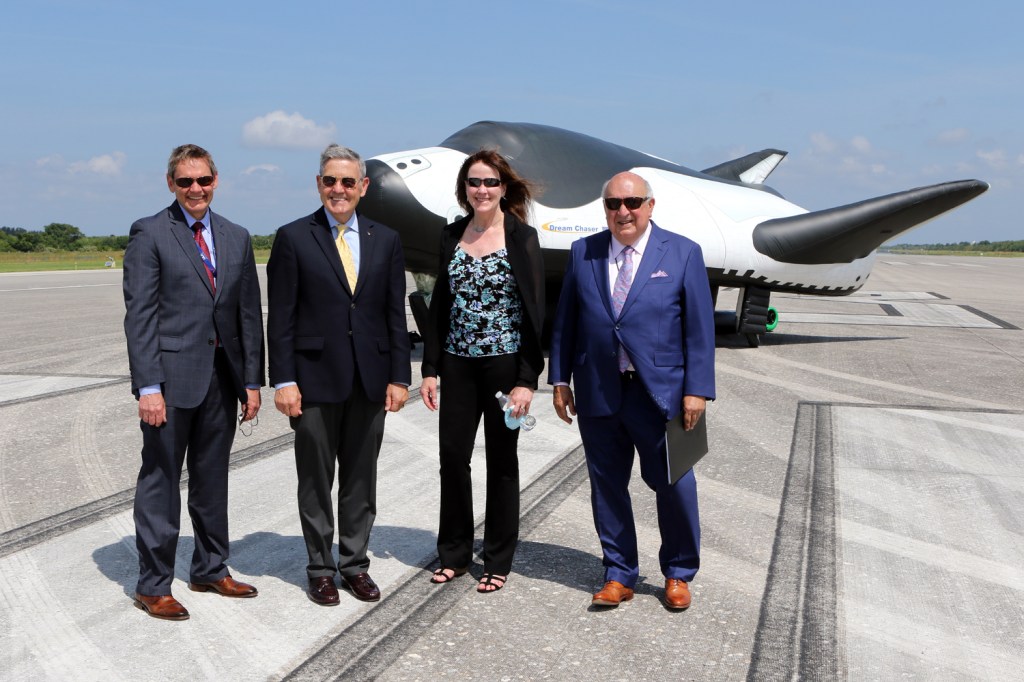
As Shields said, Kennedy Space Center will be Sierra Space’s main point of operations. Vulcan launches down the road at Cape Canaveral Space Force Station, and the historic Shuttle Landing Facility is where it will land. In addition, Shields hinted at a large Sierra Space facility to be built around what is now known as the Launch and Landing Facility.
We had a press conference with Space Florida down there where we announced this partnership to use the old Shuttle Landing Facility. That’s where the Dream Chaser will land.
Our full anticipation is we will stand up a pretty significant facility there. Employ hundreds of people to house the facility, and conduct those operations. It will be fully private, fully commercial endeavor that Sierra Space would be pursuing there.
Orbital Reef and the LIFE Habitat
Sierra Space has partnered with Jeff Bezos’ Blue Origin and other companies to build Orbital Reef, a mixed-use facility in orbit. With the retirement of the International Space Station looming on the horizon, private companies have been asked to develop its replacement.

Built on Sierra Space’s LIFE Habitat as its backbone, Orbital Reef was awarded money by NASA to continue its development.
We like to challenge people to come up with ideas, challenge us on what you need in the way of technologies and capabilities to have an address in space. Where you can make movies, do research, advance your technology. You know, really the ideas are infinite as to what we can do in space.
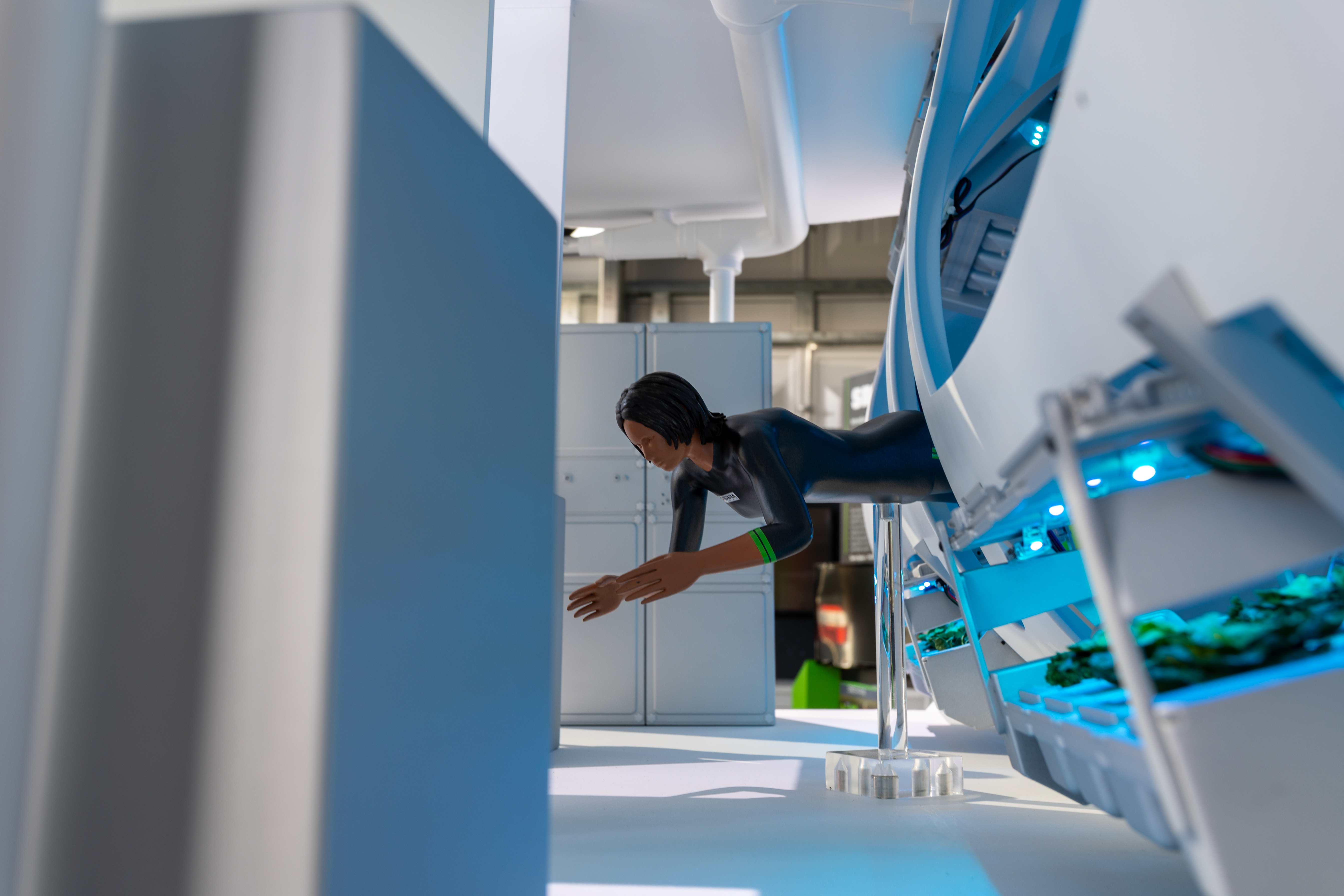

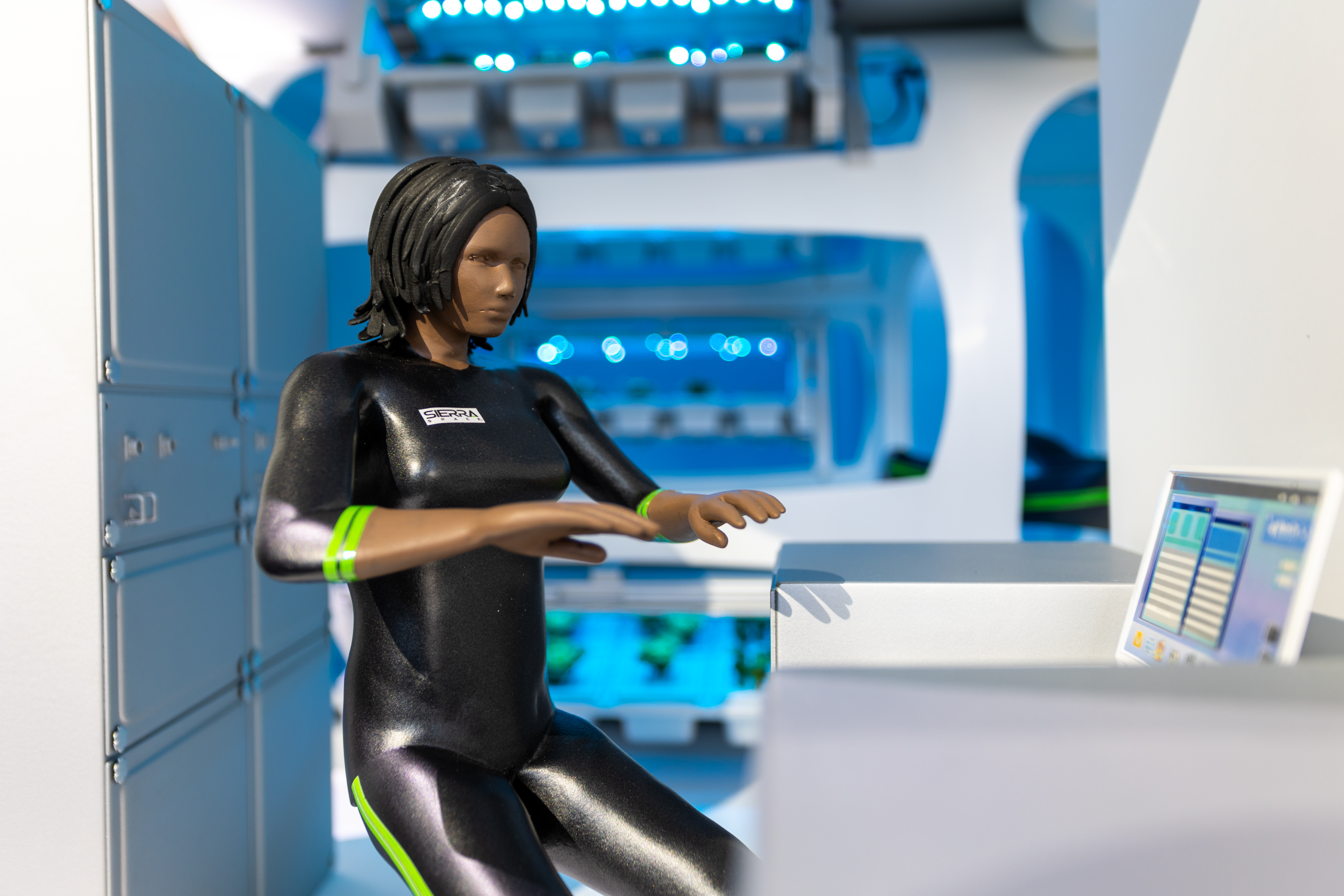
Orbital Reef is still in the early stages of development. However, Shields said we should expect the station to reach operational status in 2026 or 2027. Also, this sort of technology is not just built for low Earth orbit – it can be used elsewhere.
What’s important about the Orbital Reef, all of the technologies, the subsystems, everything that the LIFE [Habitat] is built upon can also live on service habitats. So we could see Life Habitats living on the surface of the Moon, surface of Mars, and any orbit that you can think of.
Sierra Space will be developing both the LIFE Habitat and what they are calling the Node module. This is where you will find an airlock and berthing ports, giving Orbital Reef EVA capabilities. Something Sierra Space expects to use for both commercial and tourism purposes.
I think EVA is sort of the next thing with the space tourism, and I think it’s something we’re going to look at real hard. I know we’re looking at it right now, and I think it’s a real possibility.
Orbital Reef will focus on space manufacturing and research
Orbital Reef has been marketed as a mix-use business park, so tourism is definitely not the only thing going on up there. Research and manufacturing of new technologies will be a big focus right away.
Some of the market sectors we’ll be concentrating on will be in space manufacturing. Initially, probably research in things like exotic glass, new fibers, optical fibers. We’re going to be working with different companies and academia, understanding for instance the process of a thin film deposition processes that might, as an example – and this is some real projects going on today – artificial retina production in space right now. That’s some work that’s occurring right now.
We’d like to continue that work, port it over to the Orbital Reef in the LIFE Habitat where we can produce things at scale. Not just sort of the test kitchen or the proof of concept that’s existing right now in space.
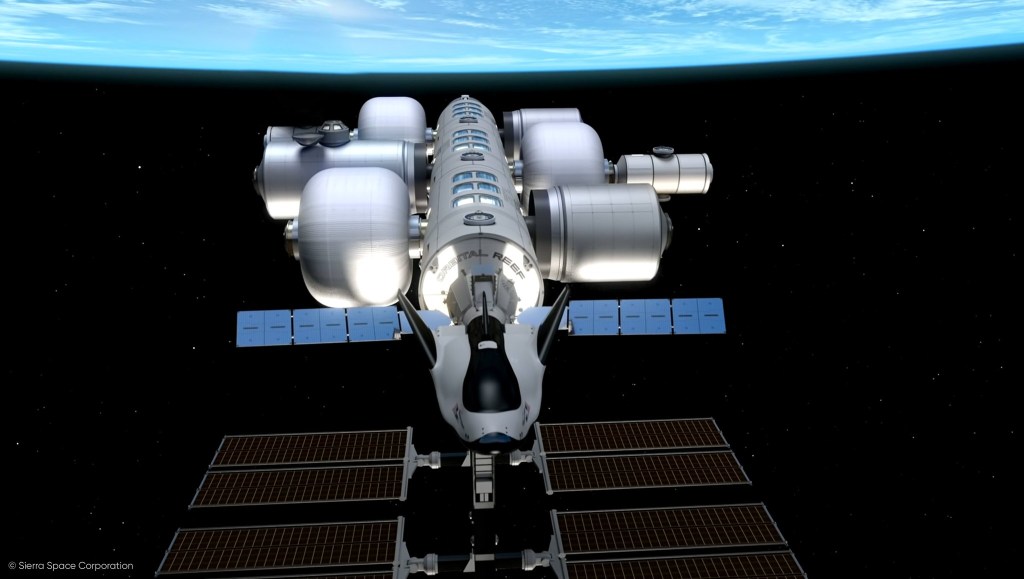
Beyond that, we’re going to be working with biopharma for using microgravity to do disease modeling. To advance things in drug development and drug formulations, particularly in the area of regenerative medicine. Treating things like osteoporosis, things that affect the entire planet, huge populations.
But in space assembly and in space manufacturing and being able to now actually transition from proof of concept and test kitchen to full scale production of something in space, we have the ability to go and do that now with things like the LIFE Habitat.
Sierra Space’s look at the future of the space industry
Sierra Space showed off its Dream Chaser space plane and LIFE Habitat at CES in Las Vegas last month. You might think that’s a weird place to see a space company showcasing its products, but Sierra Space believes it was the perfect spot to be.
We think that space, and we think the environment of microgravity offers limitless opportunities for a number of companies, whether you are trying to build new, super alloys that will withstand high environments, high temperatures to build a better engine block. You know, John Deere tractor, maybe. You are trying to develop the next generation exotic glass to go into every cell phone and every iPad and every laptop there is maybe doing that through microgravity research is what opens that up.
We’re here to introduce and enable access to the world to space like it has never been there before. We’re also here to learn from the world, what are the ideas that we’re not thinking of? What are the ideas that that you need?
You don’t have to figure out how to get to space. You don’t have to figure out how to operate in space. Just tell us what you’re trying to get out of it, what are you trying to get out of that microgravity environment, What are you trying to get out of exposing your materials or your science or your technology to the extreme environments? We’ll take care of the rocket science and the engineering. We’ll bring you back your data. We’ll bring you back your products.
While we are going to have to wait at least another year to see Dream Chaser launch and then land at the Launch and Landing Facility, hopefully, the wait will be worth it, as if things go right for Sierra Space, the company could usher in a new era of commercial space opportunities.
Enjoy reading Space Explored?
Help others find us by following on Apple News and Google News. Be sure to check us out on YouTube, Twitter, Facebook, and Instagram, join our Discord!
FTC: We use income earning auto affiliate links. More.


Comments